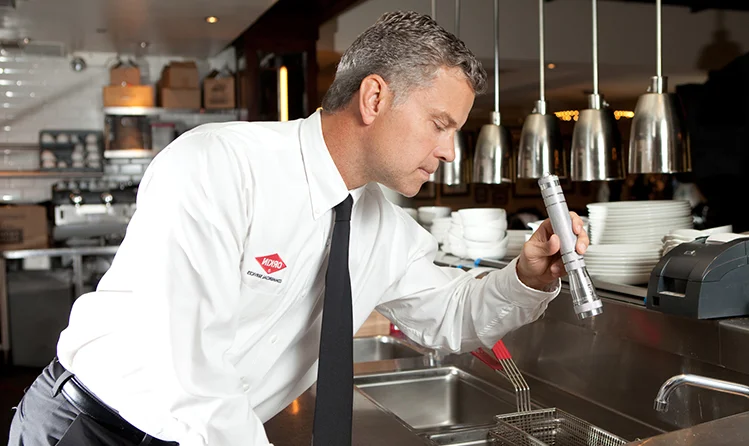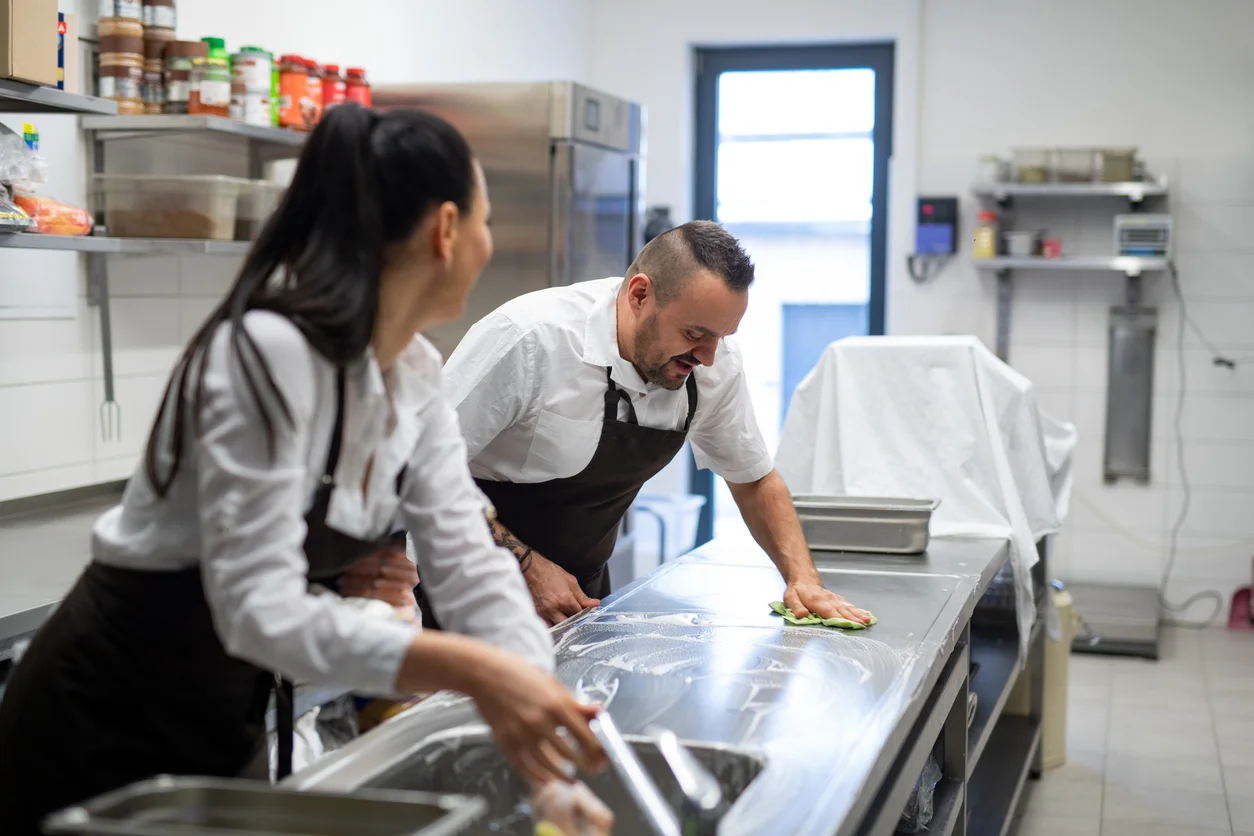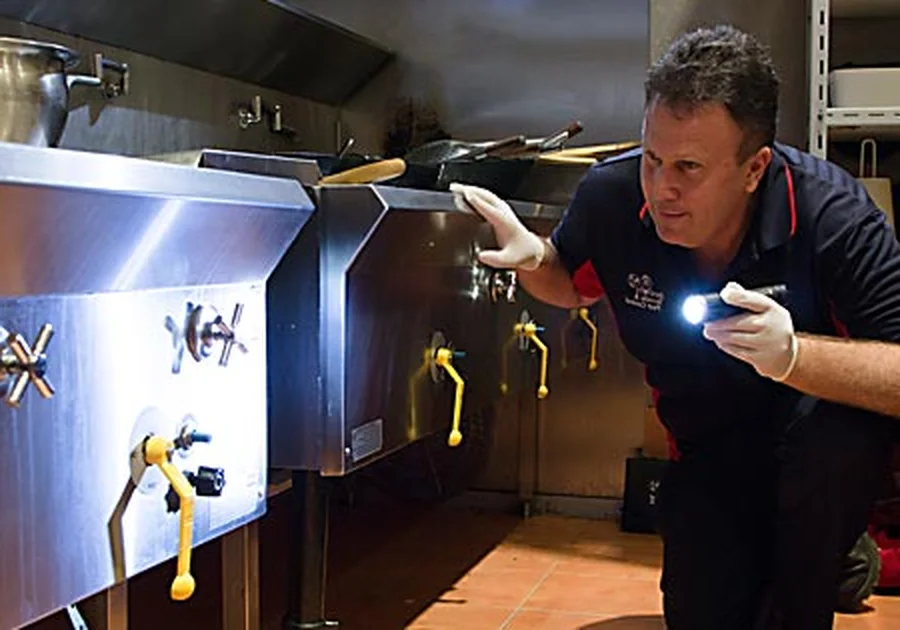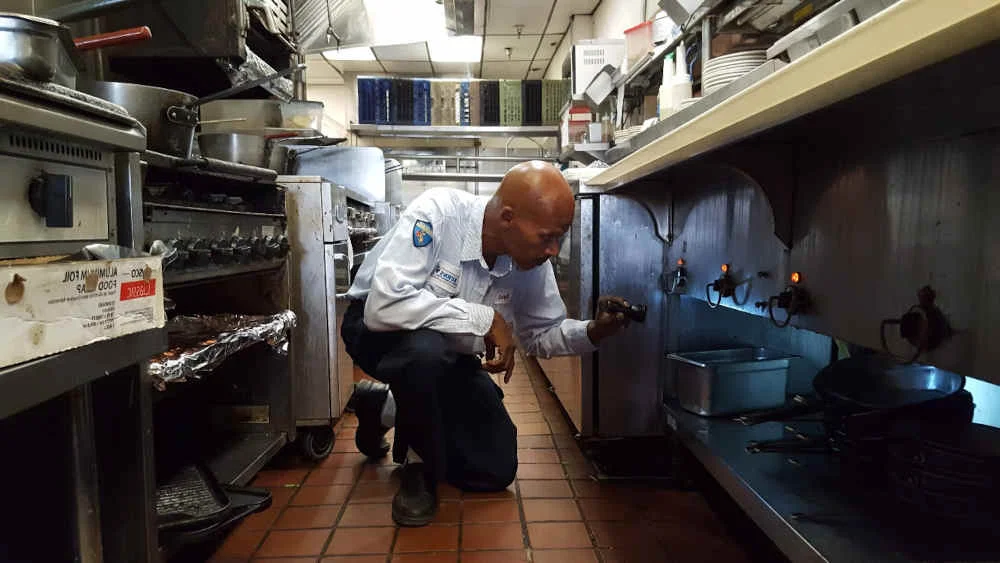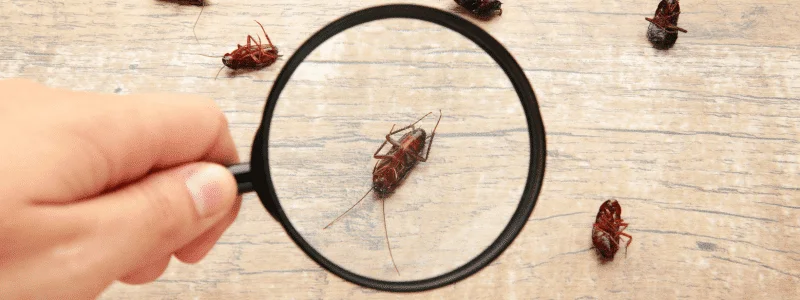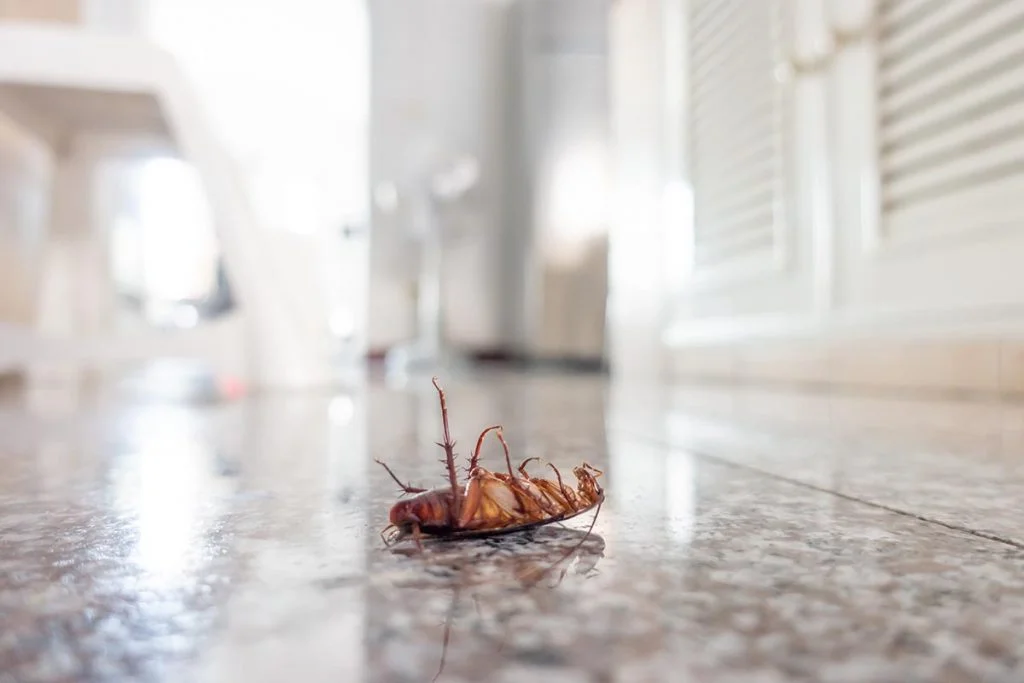Restaurant pest control goes far beyond eliminating unwanted visitors – it's about protecting your reputation, maintaining health code compliance, and ensuring customer satisfaction in one of the most challenging pest management environments. Restaurant pest control requires specialized expertise that understands food service operations, health department regulations, and the unique challenges of commercial kitchens where food, moisture, and warmth create ideal conditions for pest activity. A single pest sighting can trigger health department violations, negative reviews, and lasting damage to your establishment's reputation.
Modern food service establishments face increasing pressure from health inspectors, online reviews, and customer expectations that demand pest-free dining environments. Professional restaurant pest inspection and management programs provide the comprehensive protection necessary to maintain compliance, protect your investment, and ensure the clean, professional atmosphere that customers expect. Effective restaurant pest management prevents problems before they occur while providing rapid response when issues arise.
Critical Pest Control Challenges in Restaurant Operations
Restaurant environments present unique pest management challenges that require specialized knowledge, rapid response capabilities, and deep understanding of food service operations. These challenges make restaurant pest control one of the most demanding sectors in commercial pest management:
-
Health department compliance pressure Restaurant pest control must meet strict health code requirements that can result in immediate closure, fines, or permit suspension if violations are discovered during routine inspections or complaint investigations.
-
Food safety and contamination risks Pest activity in food preparation, storage, or dining areas can contaminate ingredients, compromise food safety, and create serious health risks that extend far beyond aesthetic concerns.
-
Complex kitchen environments Commercial kitchens contain numerous pest attractants including food debris, grease accumulation, moisture from dishwashing operations, and warm temperatures that create ideal breeding conditions for multiple pest species.
-
Customer perception and online reviews A single pest sighting by customers can result in negative online reviews, social media complaints, and lasting reputation damage that significantly impacts business success and customer loyalty.
-
Operational timing constraints Pest control activities must be coordinated carefully around food service operations, often requiring after-hours service or precise timing that doesn't disrupt meal preparation or customer service.
-
Multiple entry points and delivery traffic Restaurant operations involve constant deliveries, staff movement, and customer traffic that create numerous opportunities for pest entry and make comprehensive exclusion challenging.
These challenges require pest control providers with specialized restaurant experience, understanding of food service operations, and the ability to provide discrete, effective service that protects both compliance and customer experience.
Common Restaurant Pests and Their Impact
Restaurants encounter specific pest challenges that can immediately impact operations, health code compliance, and customer satisfaction. Understanding these common pests and their risks is essential for effective restaurant pest management:
Cockroaches
Thorough cockroach inspection in commercial kitchen environment
Cockroaches represent the most serious pest threat to restaurant operations, carrying pathogens that can contaminate food and surfaces throughout the establishment. German cockroaches, in particular, thrive in warm, humid commercial kitchen environments and can quickly establish large populations that spread throughout the restaurant.
Beyond health risks, cockroach sightings can trigger immediate health department violations, customer complaints, and negative publicity that severely damages restaurant reputation. Effective professional cockroach removal requires comprehensive treatment programs that address breeding sites, eliminate populations, and prevent re-establishment through ongoing monitoring and prevention.
Rodents
Strategic rodent monitoring in restaurant food storage areas
Mice and rats pose severe threats to restaurant operations, contaminating food supplies, damaging inventory packaging, and creating serious health code violations that can result in immediate closure. Rodents are attracted to restaurants by abundant food sources and often enter through delivery areas or structural gaps.
Restaurant rodent control requires comprehensive exclusion work, strategic monitoring systems, and rapid response protocols that address activity before contamination occurs. Prevention-focused approaches provide the most effective protection against rodent-related health violations and reputation damage.
Flies
Flying insect management in restaurant dining and food prep areas
Flying insects, particularly house flies and fruit flies, create immediate customer perception issues while posing serious food contamination risks. Flies can transfer pathogens from contaminated sources to food preparation surfaces, ingredients, and plated food, creating significant health hazards.
Effective fly control requires elimination of breeding sites, implementation of exclusion measures, and targeted treatment programs that address both indoor and outdoor fly sources. Restaurant fly management must balance customer comfort with effective pest control throughout dining and food preparation areas.
Ants
Ant infestations in restaurants can contaminate food supplies and create unsanitary conditions that violate health codes. Different ant species are attracted to various food sources, from sugary spills to grease and protein-based foods, making comprehensive ant control essential for restaurant operations.
Restaurant ant control requires targeted baiting systems, comprehensive sanitation programs, and exclusion measures that prevent ant entry without interfering with food service operations or customer areas.
Stored Product Insects
Beetles, moths, and other stored product insects can infest dry goods, spices, and packaged ingredients, causing significant food loss and potential health code violations. These pests often arrive with deliveries and can quickly spread throughout storage areas if not detected early.
Prevention focuses on incoming inspection protocols, proper storage practices, and comprehensive monitoring that detects stored product insect activity before widespread contamination occurs.
Comprehensive Restaurant Pest Management Programs
Effective restaurant pest control requires comprehensive programs that integrate seamlessly with food service operations while providing the thorough protection necessary to maintain health code compliance and customer satisfaction. Modern restaurant pest management combines prevention, monitoring, and rapid response to maintain pest-free environments that protect both reputation and regulatory compliance.
Professional restaurant pest management programs include detailed facility assessments, customized treatment protocols, comprehensive monitoring systems, staff training components, and detailed documentation that supports health department inspections and operational decision-making.
Food Service Expertise
Our restaurant pest control programs are designed by specialists who understand food service operations, health code requirements, and the unique challenges of maintaining pest-free environments in commercial kitchen and dining environments.
Here's a comparison of different pest management approaches for restaurant operations:
| Management Approach |
Benefits |
Best Applications |
| Basic Commercial Service |
Lower costs; standard commercial protocols; routine scheduling.
|
Small cafes; limited food service; establishments with minimal health code pressure.
|
| Food Service Program |
Restaurant awareness; health code consideration; flexible scheduling; basic documentation.
|
Medium restaurants; casual dining; establishments with moderate health department oversight.
|
| Comprehensive Restaurant IPM |
Specialized protocols; health code compliance support; comprehensive monitoring; detailed documentation.
|
Full-service restaurants; high-volume establishments; businesses prioritizing reputation protection.
|
| Premium Food Safety Program |
Maximum protection; 24/7 support; complete compliance documentation; reputation management support.
|
Fine dining; chain restaurants; establishments with highest standards and reputation requirements.
|
The appropriate program level depends on restaurant type, health department oversight, customer expectations, and reputation protection priorities. Most full-service restaurants benefit from comprehensive IPM programs or higher protection levels.
Specialized Services by Restaurant Type
Fine Dining Establishments
Fine dining restaurants require the highest levels of pest control discretion and effectiveness to maintain the sophisticated atmosphere essential for premium dining experiences. These establishments cannot afford any pest-related incidents that could compromise their reputation or customer confidence.
Programs emphasize prevention, discrete service delivery, and comprehensive monitoring that ensures pest-free environments without any visible impact on the dining experience. Emergency response capabilities provide immediate attention to any issues that could affect customer perception or service quality.
Fast Casual and Quick Service
Fast casual and quick service restaurants face unique challenges including high customer traffic, rapid food turnover, and intensive kitchen operations that require efficient, effective pest control programs. These establishments need pest management that works around busy operational schedules while maintaining health code compliance.
Programs focus on efficiency, comprehensive prevention, and flexible scheduling that accommodates high-volume food service operations while providing the thorough protection necessary for health department compliance and customer satisfaction.
Bars and Nightlife Venues
Bars and nightlife venues present unique pest control challenges including late operating hours, alcohol-related spills, and different customer expectations that require specialized approaches. These establishments need pest control programs that work around entertainment schedules while addressing the specific attractants common in bar environments.
Specialized programs address alcohol and food spills, provide after-hours service flexibility, and focus on areas like bar tops, storage areas, and kitchen facilities that are critical for health code compliance and customer satisfaction.
Coffee Shops and Cafes
Coffee shops and cafes require pest control programs that maintain clean, welcoming environments while accommodating the unique challenges of beverage service, pastry displays, and casual dining atmospheres. These establishments need discrete, effective service that preserves the comfortable atmosphere essential for customer retention.
Programs emphasize prevention, address specific attractants like coffee grounds and pastry crumbs, and provide flexible service that works around peak customer hours while maintaining the clean, professional appearance customers expect.
Chain and Franchise Operations
Chain and franchise restaurants require standardized pest control programs that maintain consistent quality across multiple locations while meeting corporate standards and local health department requirements. These operations benefit from coordinated programs that provide uniform protection and simplified management.
Standardized programs include consistent protocols, centralized reporting, corporate compliance support, and coordinated management that ensures all locations maintain the same high standards of pest control and health code compliance.
Health Code Compliance and Regulatory Requirements
Understanding Health Department Standards
Restaurant pest control must meet strict health department standards that vary by jurisdiction but consistently require comprehensive pest management programs that prevent contamination and maintain sanitary conditions. Understanding these requirements is essential for avoiding violations that could result in fines, closures, or permit suspension.
Professional programs provide compliance support that includes understanding local health code requirements, maintaining required documentation, and implementing pest control measures that meet or exceed regulatory standards while supporting successful health department inspections.
-
FDA Food Code Compliance Restaurant pest control programs align with FDA Food Code requirements that establish national standards for food safety, including pest control measures and documentation requirements.
-
Local Health Department Standards Programs meet specific local health department requirements that may include additional standards, reporting requirements, and inspection protocols beyond federal guidelines.
-
HACCP Integration Pest control programs integrate with Hazard Analysis and Critical Control Points systems to support comprehensive food safety management and regulatory compliance.
-
Documentation and Record Keeping Comprehensive record-keeping systems provide detailed documentation that supports health department inspections and demonstrates ongoing pest management compliance.
-
Inspection Preparation Programs include inspection preparation support that ensures restaurants are ready for announced and unannounced health department inspections with proper documentation and compliance demonstration.
Effective compliance management requires ongoing attention to changing regulations, regular program updates, and continuous improvement processes that maintain the highest standards of food safety and pest management.
Prevention Strategies and Sanitation Integration
Kitchen Sanitation Coordination
Effective restaurant pest control requires close coordination with kitchen sanitation programs to eliminate the food sources, moisture, and harborage areas that attract pests. This collaboration includes developing cleaning protocols that support pest prevention while maintaining the efficiency essential for food service operations.
Integration includes training kitchen staff to recognize pest signs, implementing cleaning procedures that eliminate pest attractants, and coordinating waste management practices that prevent pest breeding and feeding opportunities throughout the restaurant.
Food Storage and Receiving Protocols
Proper food storage and receiving protocols are essential for preventing pest entry and eliminating attractants that could establish pest populations. This includes inspection procedures for incoming deliveries, storage practices that prevent pest access, and inventory rotation that eliminates pest breeding opportunities.
Effective protocols include staff training on pest prevention during receiving operations, storage container requirements that exclude pests, and regular inspection procedures that detect pest activity before widespread contamination occurs.
Waste Management and Grease Control
Restaurant waste management and grease control are critical components of pest prevention that require specialized attention in food service environments. Proper waste handling, grease trap maintenance, and dumpster area management eliminate major pest attractants while supporting overall sanitation objectives.
Comprehensive waste management includes staff training on pest prevention, equipment maintenance that eliminates pest harborage, and coordination with waste removal services that maintain clean, pest-free disposal areas throughout restaurant operations.
Staff Training and Awareness Programs
Pest Recognition and Reporting
Restaurant staff training is essential for early pest detection and prevention that protects health code compliance and customer satisfaction. Comprehensive training programs teach staff to recognize pest signs, understand prevention procedures, and follow proper reporting protocols that enable rapid response to emerging issues.
Training includes pest identification, understanding how restaurant operations affect pest activity, and implementing daily practices that support pest prevention while maintaining food service efficiency and customer service quality.
Prevention Integration with Daily Operations
Effective pest prevention requires integration with daily restaurant operations through staff practices that eliminate pest attractants while maintaining operational efficiency. This includes cleaning procedures, food handling practices, and maintenance activities that support pest prevention objectives.
Integration training helps staff understand how their daily activities impact pest control success and provides practical techniques for maintaining pest prevention standards without compromising food service quality or operational productivity.
Management Training and Oversight
Restaurant management training ensures supervisory staff understand their role in pest prevention and can effectively oversee pest control programs while maintaining operational standards. Management training includes understanding health code requirements, overseeing staff compliance, and coordinating with pest control professionals.
Comprehensive management training provides the knowledge needed to maintain effective pest control programs, prepare for health department inspections, and make operational decisions that support both pest prevention and business success.
Emergency Response and Crisis Management
Immediate Response Protocols
Restaurant pest emergencies require immediate response to prevent health code violations, customer complaints, and reputation damage that could severely impact business operations. Emergency pest control responses must be rapid, discrete, and effective while minimizing disruption to food service operations.
Emergency protocols include 24/7 availability, rapid assessment procedures, immediate containment strategies, and comprehensive communication with restaurant management to address urgent situations while protecting customer experience and operational continuity.
Reputation Protection and Crisis Communication
Pest-related emergencies in restaurants require careful handling to protect reputation and customer confidence while addressing immediate health and safety concerns. This includes discrete emergency response, effective communication strategies, and rapid resolution that minimizes negative impact on business operations.
Crisis management includes coordinating with restaurant management to address customer concerns, providing documentation that demonstrates rapid response, and implementing follow-up measures that prevent recurrence while rebuilding customer confidence.
Seasonal Restaurant Pest Management
Spring Preparation (March-May)
- Comprehensive facility inspections
- Outdoor dining area preparation
- Staff training and protocol updates
- Exclusion work and facility maintenance
Focus: Prepare restaurants for seasonal pest activity and outdoor dining operations with comprehensive prevention measures.
Peak Season (June-August)
- Flying insect management emphasis
- Outdoor dining pest control
- Intensive monitoring and inspections
- Enhanced sanitation coordination
Focus: Maintain comprehensive pest control during peak dining season with enhanced outdoor and flying insect management.
Transition Period (September-November)
- Indoor pest prevention emphasis
- Facility winterization preparation
- Storage area pest-proofing
- Holiday season preparation
Focus: Prepare for indoor focus and increased holiday dining with comprehensive exclusion and prevention measures.
Indoor Focus (December-February)
- Interior pest monitoring emphasis
- Kitchen and storage area focus
- Staff training and education
- Program evaluation and planning
Focus: Maintain comprehensive indoor pest control and prepare improvements for the upcoming busy season.
Restaurant Pest Control Success Stories
"PestControl100's restaurant program has been essential for our health department compliance. We've had zero pest-related violations for three years straight, and their discrete service ensures our customers never see any pest control activity during dining hours."
- Marco Antonelli, Restaurant Owner
★★★★★
"The emergency response saved our reputation when we discovered a potential issue during our dinner rush. Their team was here within an hour and resolved the situation without any customer awareness or operational disruption."
- Sarah Chen, General Manager
★★★★★
"Managing pest control across our restaurant chain was complex until we partnered with PestControl100. Their standardized program ensures consistent quality at all locations while meeting local health department requirements."
- David Rodriguez, Operations Director
★★★★★
Frequently Asked Questions
How often should restaurants receive pest control services?
Most restaurants benefit from weekly or bi-weekly pest control services, depending on facility size, kitchen complexity, and pest pressure. High-volume restaurants, establishments with previous pest issues, or locations in high-risk areas may require more frequent service. The optimal schedule is determined through initial assessment and ongoing monitoring results.
What documentation do you provide for health department inspections?
Our restaurant programs provide comprehensive documentation including detailed inspection reports, treatment logs, monitoring records, pest sighting documentation, and corrective action reports. All documentation is designed to meet health department requirements and support successful inspections with clear evidence of ongoing pest management compliance.
How do you coordinate pest control with restaurant operations?
We work closely with restaurant management to schedule services during non-operating hours or low-activity periods, ensuring minimal disruption to food service operations. Our technicians understand restaurant workflows and coordinate timing, access, and treatment methods to maintain operational efficiency while providing effective pest control.
Do you provide emergency pest control for restaurants?
Yes, we provide 24/7 emergency response for restaurant pest issues with rapid response times that protect health code compliance and customer experience. Emergency services include immediate assessment, discrete treatment, and follow-up measures that address urgent situations without disrupting restaurant operations or customer service.
Restaurant Pest Control Resources
Health Department Compliance Support
Our restaurant pest control programs provide comprehensive compliance support including detailed documentation, staff training materials, and inspection preparation that helps restaurants maintain health code compliance and pass inspections successfully.
Staff Training Programs
Comprehensive training programs for restaurant staff include pest identification, prevention techniques, proper sanitation practices, and reporting procedures that create a pest-aware workforce supporting overall food safety and customer satisfaction objectives.
Chain Restaurant Programs
Specialized programs for restaurant chains and franchises provide standardized protocols, centralized reporting, and coordinated management that ensures consistent pest control quality across all locations while meeting corporate standards and local requirements.
Emergency Response Services
24/7 emergency pest control services provide immediate response to urgent situations with discrete, effective treatment that protects restaurant operations, customer experience, and reputation during critical pest-related emergencies.
Restaurant Pest Prevention Best Practices
Kitchen and Food Preparation Areas
Effective restaurant pest prevention begins with maintaining clean, organized kitchen and food preparation areas that eliminate pest attractants and breeding opportunities. This includes proper food storage, regular cleaning procedures, and equipment maintenance that removes grease and food debris that attract pests.
Best practices include implementing daily cleaning schedules, maintaining proper food storage containers, ensuring adequate drainage around dishwashing areas, and coordinating with pest control professionals to identify and address potential problem areas before they become pest issues.
Dining Area and Customer Spaces
Restaurant dining areas require careful attention to prevent pest activity that could impact customer experience and satisfaction. This includes proper waste management, regular cleaning procedures, and maintaining conditions that prevent pest establishment while preserving the atmosphere essential for customer enjoyment.
Effective dining area pest prevention includes staff training on spill cleanup, proper table maintenance, and recognizing pest signs that could indicate emerging issues requiring professional attention.
Storage and Receiving Areas
Restaurant storage and receiving areas are critical points for pest prevention that require specialized attention to prevent pest entry and establishment. This includes inspection procedures for incoming deliveries, proper storage practices, and maintaining clean, organized storage areas that don't provide pest harborage opportunities.
Best practices include staff training on delivery inspection, implementing proper storage procedures, maintaining appropriate temperature and humidity levels, and coordinating with suppliers to ensure pest-free deliveries that don't introduce new pest populations.
Restaurant Pest Control Investment and Business Protection
Protecting Revenue and Reputation
Professional restaurant pest control provides essential protection for revenue, reputation, and business continuity that far exceeds the investment cost. Pest-related incidents can result in health department closures, negative reviews, customer loss, and reputation damage that impacts long-term business success and profitability.
Effective programs protect against these risks while supporting the clean, professional environment that customers expect and health departments require, providing ongoing value that supports business growth and customer satisfaction.
Health Code Compliance and Operational Continuity
Restaurant pest control supports health code compliance that prevents costly violations, fines, and operational disruptions that could severely impact business operations. Professional programs provide the documentation and protection needed to maintain compliance while supporting successful health department inspections.
Compliance support includes maintaining required documentation, implementing approved pest control measures, and providing ongoing monitoring that demonstrates effective pest management to health department inspectors and regulatory authorities.
Long-Term Business Success
Comprehensive restaurant pest control supports long-term business success by maintaining the clean, safe environment essential for customer satisfaction, employee morale, and operational efficiency. Prevention-focused approaches provide the most cost-effective protection while supporting the professional standards that drive customer loyalty and business growth.
Professional programs deliver ongoing value through consistent pest prevention, rapid response capabilities, and comprehensive support that enables restaurant operators to focus on food service excellence while maintaining optimal facility conditions and regulatory compliance.


